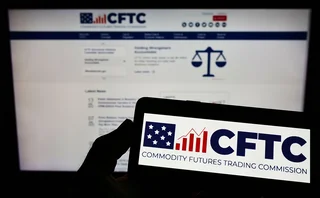
Questionable standards – Insurers call for IFRS 17 changes
Insurers have gained an additional 12 months to implement their IFRS 17 programmes, but the industry is calling for further changes to the standard as well as more time

The news on November 15 that the International Accounting Standards Board (IASB) intends to delay the implementation of IFRS 17 to 2022 saw the standard-setter meet the insurance industry’s request for a two-year extension halfway.
But, whether one year or two, IFRS 17 is merely delayed – not cancelled – and this adjournment, according to Francesco Nagari, who leads Deloitte’s global Insurance IFRS practice, will not impact the strategic focus of European insurers. These firms had spent the previous few years investing heavily in terms of people, data and systems to meet Solvency II, which came into force in 2016. According to Nagari, insurers are looking to repurpose these efforts as much as possible to meet impending accounting standards.
“European insurers already have to comply with the stringent Solvency II regime, and we know for sure that our European clients all have a strategic goal in mind – that is, the integration of Solvency II and IFRS requirements in terms of implementation work. This is of the utmost importance in terms of how they will manage these requirements across data and people and systems.”
Prudential and accounting approaches
The good news according to Nagari is that Solvency II’s use of mark-to-market pricing means the difference between the prudential and the accounting standards will only be found on the liability side of the balance sheet. Even here, there are a number of areas where it is possible to reconcile the two approaches, with the stringency of the existing Solvency II standards meaning IFRS 17 should result in lower liability figures than for their prudential requirements.
“Solvency II takes a different perspective altogether from IFRS. It says that insurers should be calculating a balance sheet in the event they are going to go bust, and what Solvency II regulators want to know is how much insurers are going to have to pay for someone else to take that liability off their balance sheet,” he says.
By contrast, IFRS 17 intends to provide a more consistent global accounting model for insurers, aimed at enabling investors to better compare different firms issuing different types of insurance contracts in a more meaningful way. But even if Nagari is correct that large-scale European insurers – with the potential exception of some of the UK bulk-purchase annuity sector – will see lower liabilities under IFRS 17 than Solvency II, not everyone is happy.
This was made very clear in a letter from the European Insurance CFO Forum to IASB on December 6, signed by the group’s chair Matthew Rider, chief finance officer at Dutch firm Aegon. The letter highlighted a number of concerns resulting from IFRS 17 field testing earlier in 2018, conducted by the European Financial Reporting Advisory Group (Efrag).
“As we have consistently stated, we believe that it is very important to assess the outstanding issues identified by members of the CFO Forum in the Efrag testing exercise. This exercise – by a significant number of major insurers – along with ongoing implementation projects, has provided substantial new evidence for the significant issues, their impact and the associated cost and complexity.”
A lack of clarity
The outstanding issues outlined by the survey are almost innumerable. According to Ferdia Byrne, insurance partner at KPMG, the CFO Forum survey raised 12 key areas, which were further broken down into 25 separate issues by IASB. While not all of these 25 apply to every insurer globally, Byrne says the collective lack of clarity on what IFRS 17 will look like makes this the fundamental issue with regard to insurers meeting its requirements.
“The biggest obstacle to IFRS 17 implementation is that there are still technical issues with the standards and there has been a lack of clarity from IASB in response,” he says. From an operational perspective, insurers need to understand what changes are being made to the standard as soon as possible, so that the final technical decisions can be made to push forward with integration.”
The importance of flexibility
Byrne says the most important of the 25 areas identified by IASB relates to the proposed methodology of how to restate previously earned profits that may appear a liability under IFRS 17. There are two main structures: the full retrospective approach – which requires a complete dataset – or the prescriptive modified retrospective approach. Meeting the full retrospective approach may present clear issues regarding data availability, and therefore a number of insurers will be forced to use the modified approach, which may not be appropriate to all firms.
Byrne says the insurance industry instead wants a compromise based on the available data rather than a prescriptive list. He concedes this may not be a perfect – nor a fully retrospective – solution, but one that could be an improvement on the modified retrospective approach, particularly from an operational perspective.
“How this issue transpires will drive a lot of the work in the next couple of years, and it’s a big area where we would hope IASB will show some flexibility to help the industry do the best possible job in transitions,” Byrne says. His views on the importance of the continued ambiguity over IFRS 17 and the main barrier to its implementation were backed by Andrew Carpenter, an IFRS policy expert at the Association of British Insurers. He said the results of the recent Efrag IFRS 17 field tests simply meant that changes had to be made to the standard.
“IFRS 17 throws up operational challenges – which are unnecessary on a cost-benefit basis – and it also includes issues over performance reporting, which don’t do justice to the finances of our members’ businesses,” says Carpenter.
“In our view, IASB’s decision to opt for a one-year extension precludes it actively looking at the technical issues that remain. IASB hasn’t so far been active in its response directly and this unwillingness to engage with the industry is disappointing.”
Only users who have a paid subscription or are part of a corporate subscription are able to print or copy content.
To access these options, along with all other subscription benefits, please contact info@risk.net or view our subscription options here: http://subscriptions.risk.net/subscribe
You are currently unable to print this content. Please contact info@risk.net to find out more.
You are currently unable to copy this content. Please contact info@risk.net to find out more.
Copyright Infopro Digital Limited. All rights reserved.
As outlined in our terms and conditions, https://www.infopro-digital.com/terms-and-conditions/subscriptions/ (point 2.4), printing is limited to a single copy.
If you would like to purchase additional rights please email info@risk.net
Copyright Infopro Digital Limited. All rights reserved.
You may share this content using our article tools. As outlined in our terms and conditions, https://www.infopro-digital.com/terms-and-conditions/subscriptions/ (clause 2.4), an Authorised User may only make one copy of the materials for their own personal use. You must also comply with the restrictions in clause 2.5.
If you would like to purchase additional rights please email info@risk.net
More on Regulation
Swiss report fingers Finma on Credit Suisse capital ratio
Parliament says bank would have breached minimum requirements in 2022 without regulatory filter
‘It’s not EU’: Do government bond spreads spell eurozone break-up?
Divergence between EGB yields is in the EU’s make-up; only a shared risk architecture can reunite them
CFTC weighs third-party risk rules for CCPs
Clearing houses could be required to formally identify and monitor critical vendors
Why there is no fence in effective regulatory relationships
A chief risk officer and former bank supervisor says regulators and regulated are on the same side
Snap! Derivatives reports decouple after Emir Refit shake-up
Counterparties find new rules have led to worse data quality, threatening regulators’ oversight of systemic risk
Critics warn against softening risk transfer rules for insurers
Proposal to cut capital for unfunded protection of loan books would create systemic risk, investors say
Barr defends easing of Basel III endgame proposal
Fed’s top regulator says he will stay and finish the package, is comfortable with capital impact
Bank of England to review UK clearing rules
Broader collateral set and greater margin transparency could be adopted from Emir 3.0, but not active accounts requirement







